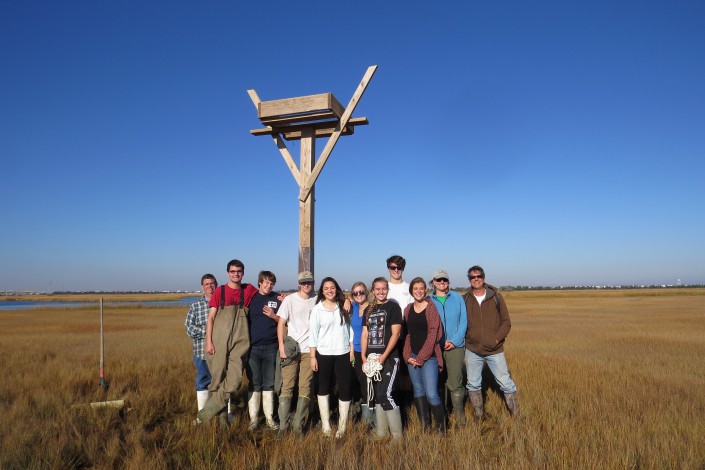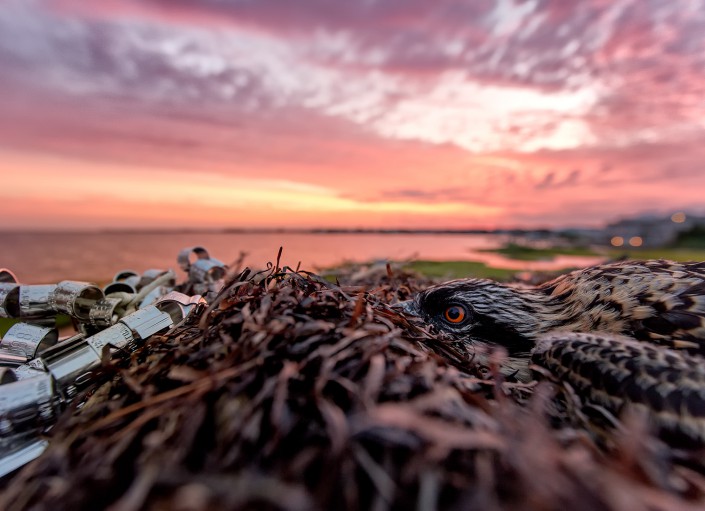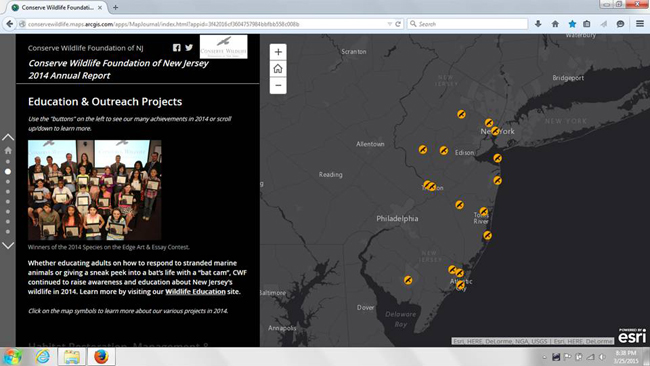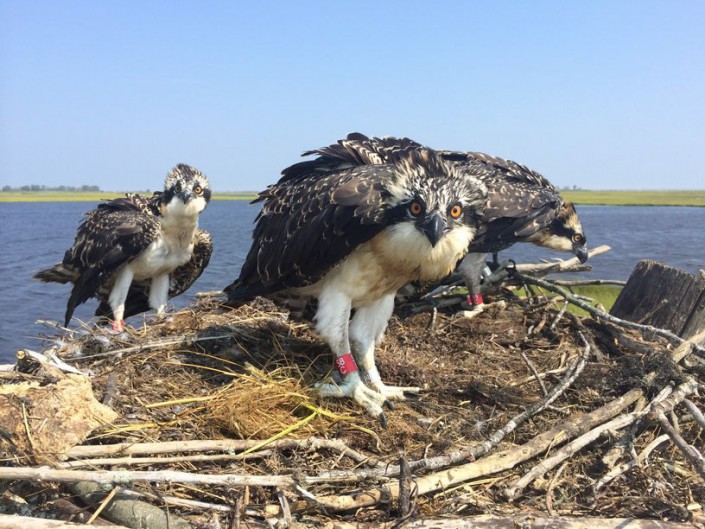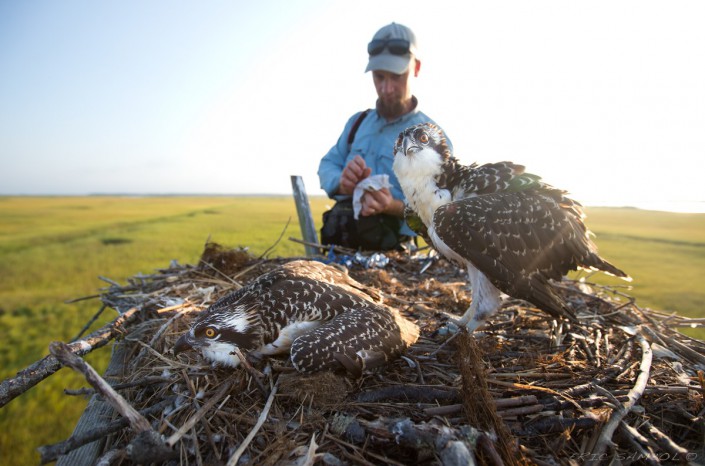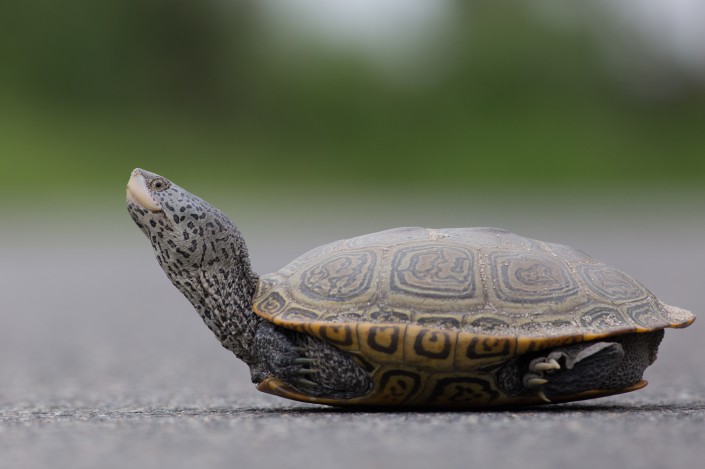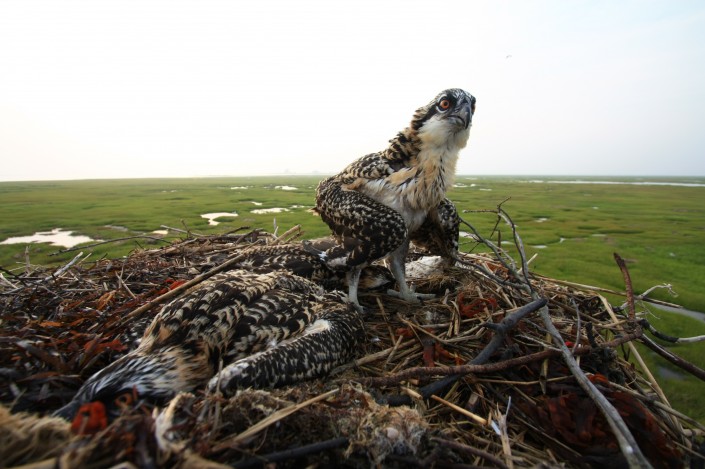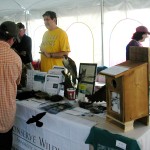Hiding in Plain Sight” to Take Place on Friday, August 14 at Ann Coen Gallery in Surf City
By: Lindsay McNamara, Communications Manager
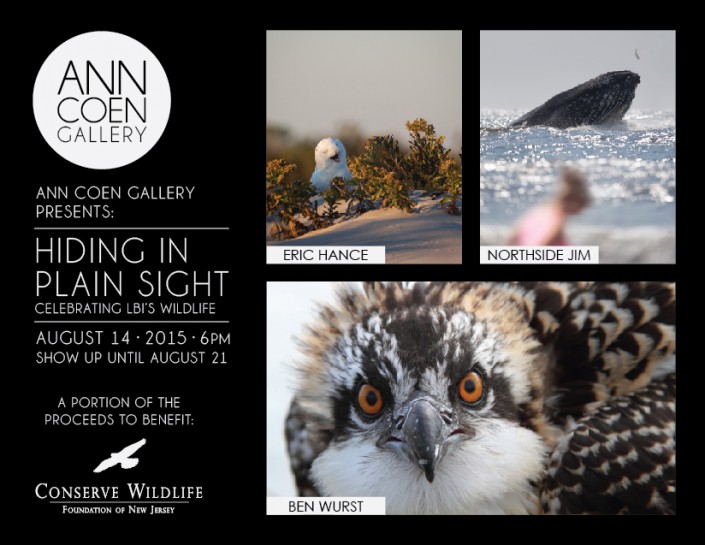
On Friday, August 14 at 6 PM, the Ann Coen Gallery will host “’Hiding in Plain Sight:’ Celebrating LBI’s Wildlife,” a photography show featuring three talented local outdoor photographers.
This – free and open to the public – event will feature a clam bar, refreshments, acoustic music, and the work of three local photographers, Eric Hance, Northside Jim and Ben Wurst, including handmade frames.
Despite their different backgrounds, all three shutterbugs are known to brave the elements all four seasons to bring rarely seen perspectives of our coastal species.
Eric Hance is a professionally trained photographer with beautiful fine art wildlife photographs. Northside Jim is an enthusiast with some outrageous and whimsical pictures showing the lives of local wildlife that live on the Island. Ben Wurst is the osprey expert who takes care of LBI’s osprey and habitat and captures stunning images of both in their most intimate moments.
“Hiding in Plain Sight” is a free event, and proceeds from the sale of photographs will benefit the work of Conserve Wildlife Foundation, a private, statewide nonprofit dedicated to protecting New Jersey’s endangered and threatened species. Photos of Humpback Whales, Bald Eagles, Osprey, Piping Plover, Terrapin, Black Skimmers, and other amazing endangered species that can be found on the Island will be on display at the Ann Coen Gallery.
“I am really excited to host this show and these three photographers. The body of work between them should prove to be very eye-opening to locals and vacationers,” explained Gallery Owner Ann Coen. “I don’t think too many people realize the wildlife we have right in our own backyard. When I approached each photographer for the show, they were all in agreement right from the start that a portion of their sales would go right back to Conserve Wildlife Foundation, which really motivated me and showed the importance each photographer places on the conservation of our wildlife here in New Jersey.”
Eric Hance is a photographer for Ann Coen Photography. His goal is to captivate viewers in the simplest form; to capture a specific scene in the strongest way.
Northside Jim is a self-proclaimed “beach bum with a camera,” from North Beach. He uses a camera to experience, to learn about, and to share stories about LBI’s creatures on his popular blog, Readings From The Northside.
Ben Wurst, photographer and Habitat Program Manager for Conserve Wildlife Foundation, is responsible for managing and protecting ospreys as part of the New Jersey Osprey Project. In addition to photography, Wurst is known for his woodworking with reclaimed materials with his small business, reclaimed LLC.
“Being able to utilize my skills to help raise critical funding and awareness for rare wildlife is a dream come true for me,” exclaimed Conserve Wildlife Foundation’s Ben Wurst. “Working with these species in New Jersey is what spawned my interests in both hobbies. Now they have progressed into lifelong passions of mine. I consider myself lucky to be on the roster for this show!”
Doors open at the Ann Coen Gallery, 1418 Long Beach Blvd. in Surf City, New Jersey, at 6 PM on Friday, August 14 for Hiding in Plain Sight: Celebrating LBI’s Wildlife. The show will remain on display until Friday, August 21.
Learn more:
Lindsay McNamara is the Communications Manager for Conserve Wildlife Foundation of New Jersey.
